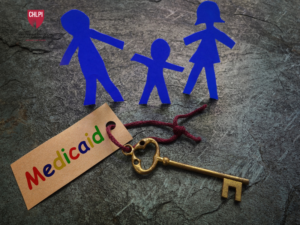This blog post was written by Sophie DeBode, a student in the Food Law and Policy Clinic
On February 1, 2023,the Zero Food Waste Act was reintroduced in the House by Representatives by Representatives Julia Brownley (D-CA), Ann McLane Kuster (D-NH), and Chellie Pingree (D-ME) and in the Senate by Senators Cory Booker (D-NJ) and Tina Smith (D-MN). The Act seeks to help the US achieve the ambitious goal of reducing the amount of food waste by 50 percent by 2030 (relative to the amount of food waste in 2010). The Act, originally introduced in 2021, would create a new grant program, administered by the Environmental Protection Agency (EPA), to provide grants to state, local, territorial, or Tribal governments; nonprofit organizations; or partnerships of such entities to reduce food waste.
Though the federal government can take many vital steps to reduce food waste through regulations and funding, state and local governments, as the primary regulators of municipal solid waste, are critical to the movement to reduce food waste. State and local policymakers and agency officials have sought to address food waste by implementing policies such as organic waste bans, food donation requirements, and composting infrastructure support. Entities that have implemented these policies have done so through processes of identifying local problems and rigorous experimentation to craft effective and innovative solutions.
The Zero Food Waste Act uplifts the important work state, local, and tribal government leaders are doing to reduce food waste. Recognizing the cost of planning for and implementing food waste reduction interventions, the Act provides funding for three different grants: planning grants, measurement grants, and reduction grants.
The first category, planning grants, will be used to investigate the kinds of food waste mitigation projects or policies likely to be most impactful within a given community. With these grants, eligible entities can develop a plan to carry out at least one food waste reduction activity, prioritizing food waste prevention. While certain policies that mandate food waste reduction or make it financially beneficial to divert rather than waste food have demonstrated success at reducing food waste, the time and resources needed for planning and implementing these policies is often a costly barrier to interested states, tribal nations, and local governments. For example, after California set a goal to reduce organic waste disposal by 75% and increase edible food donation by 20% by 2025, it took the state agency 5 years to implement a state-wide food donation requirement to meet that goal while engaging the appropriate stakeholders throughout the process. Sufficient planning is critical to ensuring that any policies or proposed infrastructure projects will meet the unique needs of the community it is serving over the long term.
The second category of grants, measurement grants, will be used to collect data and publish reports to better understand the amount of food waste generated in the state or community. To manage food waste and determine if a program is effective, it is necessary to measure food waste. Without data on how much surplus food is produced and how much of it goes to waste, states and other entities are unable to effectively manage food waste. These grants will allow entities to collect data to create a foundation for targeted waste diversion efforts and to determine which policies will be most effective.
The third category, reduction grants, will be used to fund food waste projects. These projects can include implementing differential pricing policies on the disposal of food waste, providing technical assistance to carry out food waste reduction activities, establishing restrictions on landfilling or incinerating food, or instituting demand stimulating policies for recycling end markets. Food waste reduction activities that may receive funding include recycling projects to reuse food waste as a feedstock for other non-food products, such as composting, rescuing projects to redirect surplus food to places like food shelters, and upcycling projects to make new food from ingredients that would otherwise go to landfills. Providing grants for projects that focus on food waste prevention, food waste recovery, and food waste processing, will allow for different entities to experiment with various approaches that work best in differing contexts.
In administering these grants, the EPA will prioritize grant proposals for projects in communities of color, low-income communities, or tribal communities that have been disproportionately affected by adverse human health or environmental effects. This is particularly important as pollution in our air, water, and land disproportionately affects communities where the majority of residents are Black, Indigenous, or other people of color. Food waste planning, measurement, and reduction grants can help address equity and environmental justice concerns while reducing greenhouse gas emissions. Landfills and incinerators are often sited in low-income communities of color and food is the largest component of landfills nationwide – contributing over 35 million tons to landfills each year and accounting for 24% of landfilled municipal solid waste. Keeping food out of landfills and incinerators also helps reduce the pollution emitting from them and affecting surrounding communities. By prioritizing communities affected by pollution, the Act will support this critical work. Reducing food waste is a critical component in both the fight against climate change and the fight against food insecurity. It is also a more efficient use of natural resources and a way to create new jobs in the affected industries. The Harvard Food Law and Policy Clinic supports the Zero Food Waste Bill’s reintroduction to the 118th Congress.


Health Law & Policy, Commentary
Day One Executive Orders: How Will They Impact Health Care Access? – Health Care in Motion
January 23, 2025